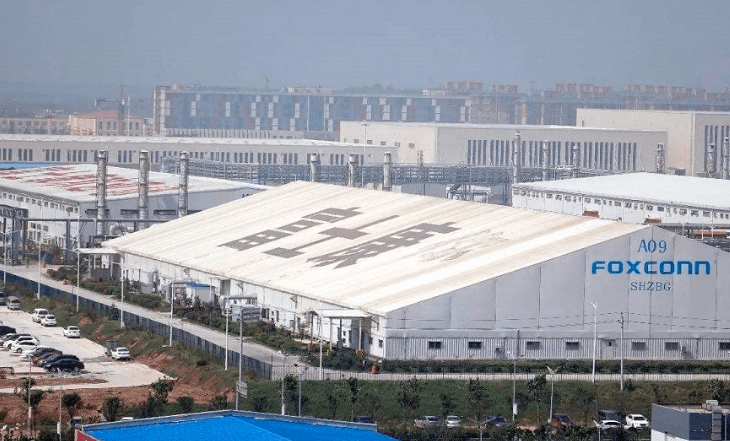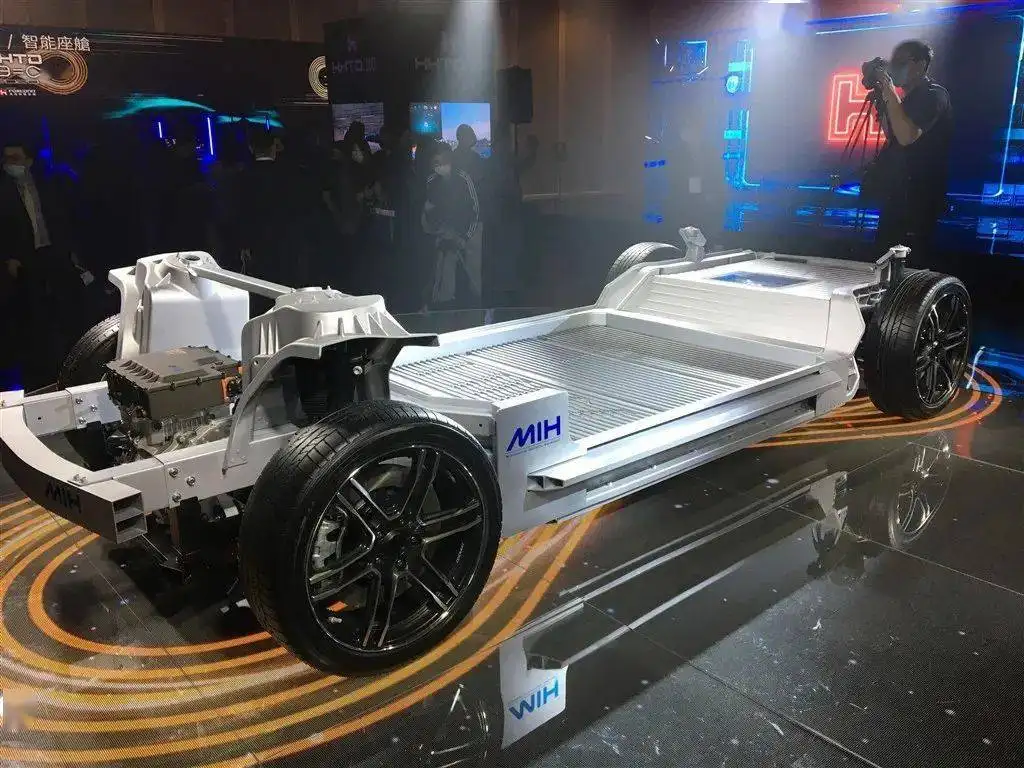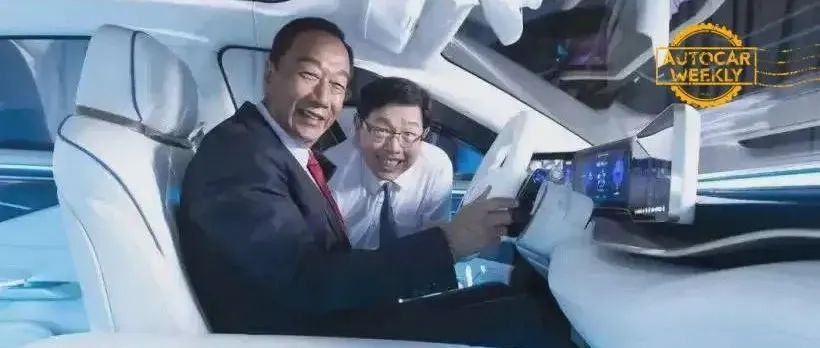Translation
By Dedee
In early November, the Public Investment Fund (PIF) of Saudi Arabia announced that it would launch Saudi Arabia’s first electric car brand, Ceer, in partnership with Foxconn’s parent company, Hon Hai Group, and BMW.
In October last year, PIF, with an estimated total wealth of 320 billion pounds, found Hon Hai Group to establish a joint venture to produce electric vehicles. At that time, insiders revealed that both parties were interested in the old chassis of BMW and hoped to adopt the approach of vietnam VinFast to quickly produce electric vehicles.
Since then, there has been no news about this joint venture plan between one of the richest countries in the world and the largest manufacturing plant in the world, until recently when BMW finally authorized some of its technologies to them.
This is another victory for Foxconn, the manufacturing maniac, in the global trend of car manufacturing in the past two years, beyond the aforementioned Ceer brand.
In addition to Saudi Arabia’s car manufacturing bureau mentioned at the beginning, Foxconn has been making moves in the Asian car industry over the past two years.
For example, in March last year, Foxconn planned to acquire a new Vietnamese car-making startup company called VinFast.
At that time, foreign media reported that Foxconn was preparing to negotiate with VinFast to acquire this new car-making enterprise and its car factories to expand its outsourcing capacity. VinFast was inclined to keep its own brand and cooperate in a more equal way, which Foxconn, who was leaning towards acquisition, could not achieve.
Later, VinFast said next time, and Foxconn never waited for next time again.
However, in June and September of this year, Foxconn did negotiate a joint venture factory with Thailand and Indonesia respectively.
The former has established a joint venture worth 36.1 billion baht (1.04 billion US dollars) with the National Petroleum Corporation of Thailand (PTT), specializing in the production of pure electric vehicles. The latter has established a joint venture called Foxconn Indika Motor with the local energy company, Indika Energy, mainly responsible for the production of electric vehicles and batteries.

Following its global expansion plan, Foxconn Technology Group has devoted itself into the automotive industry with a series of strategic moves in China.
Since 2014, Foxconn has initiated close collaborations with domestic automakers. In March that year, Foxconn partnered with BAIC Motor to invest, research and develop a new generation of electric car batteries and systems leveraging its mature technology. In November, its subsidiary, Taiwan- based Amperex Technology invested CNY 2 billion to build a lithium-ion battery production base in Anhui to create polymer lithium-ion batteries and battery assemblies.
At the end of 2014, Foxconn, in partnership with Tencent and Harmony Auto, invested HKD 600 million in a car venture, Harmony Futeng, which later became Byton. The clear division of labor for the three parties was that Tencent was responsible for connected car tech, Harmony Auto for sales and marketing, and Foxconn for production and manufacturing. Chairman Guo also stated his ambition, “After joining hands with Harmony, our goal is to be China’s Tesla.”
In January 2016, Foxconn and Beijing Automotive Industry Holding founded GreenGo, the largest new energy vehicle-sharing platform in China, with CNY 40 million total investment.
In January 2018, Foxconn participated in XPeng Motors’ B-round financing, with a total investment of CNY 2.2 billion, along with Alibaba and IDG Capital.
In January 2020, Foxconn joined hands with Fiat Chrysler Automobiles to form a joint venture for the development and production of electric vehicles in China. Fiat Chrysler holds a 50% stake of the JV and is responsible for Vhicle manufacturing, and Foxconn holds no more than 40% stake in it, taking charge of electronic technology services, including hardware and software.
Later in the same year, Foxconn partnered with Geely to form a joint venture company to provide contract manufacturing services and consultancy for global automotive and transportation companies, including but not limited to vehicles or parts, smart control systems, automotive ecosystems and the entire industrial chain and all processes of electric vehicles.Of course, we know that the various major events that have happened so far have no follow-up:
Several joint ventures did not receive orders.
GreenGo, a car rental company, achieved financial prosperity within just one year, but at the end of 2017, it suffered total losses of 64.5942 million yuan over two years, with total liabilities reaching 191 million yuan, nearly 100% of total assets.
Investing in XPeng Motors only persisted for over a year. To avoid affecting the timetable for XPeng’s restructuring and reducing uncertainties, Foxconn completely withdrew all equity and received it by affiliated IDG.
Chinese people all know how pitiful Fiat Chrysler is in China, especially in regards to the previous “Harmony Futeng” and later Byton stories, Foxconn’s visit to Byton’s Nanjing factory at the beginning of last year, throwing out $200 million to keep the company afloat, and the story of the white knight cutting and running. These stories are well known to everyone on Earth.
Foxconn, which has been plowing the field in the new energy vehicle industry for at least 17 years, has thrown money into every round in China and lost everything it put in.
Of course, Foxconn has also succeeded in making cars in China, but only inside its core base in Taiwan.
For example, in 2005, Foxconn invested 370 million yuan to acquire all the shares of Anytek Electric.
At the time, the latter’s main business was the production of reversing radar, intelligent devices, and other products. Ford, Volkswagen, Nissan, General Motors, Mazda, Daewoo, and other traditional automakers were Anytek Electric’s old customers. Through this acquisition, Foxconn entered the automotive electronic components industry and used it as a springboard to officially enter the field of automotive lithium-ion battery power system manufacturing and R&D.
There is also the Foxconn Model series, which has been launched in the last two years.
At the Technology Day in October 2020, Liu Yangwei, the chairman of its parent company Hon Hai Precision, officially announced to the world that “I, Foxconn, will build electric vehicles through contract manufacturing.”
At the time, Foxconn had already reached an agreement with the top business partner of PetroChina and Sinopec,Yulon Group, to establish a joint venture called Honghua Advanced to collaborate on developing an EV platform and a solid-state battery, to solve the shortcomings of the electric vehicle.The former refers to the electric vehicle platform MIH.
According to Foxconn’s theory, once this kind of OEM model of MIH can be completely successful, any new electric and intelligent vehicle in the future will not need to spend extra money on researching the chassis. The new car companies only need to design the appearance, interior, and software such as the vehicle system. Other parameters such as the car body wheelbase, power, battery capacity and other requirements are entrusted to Foxconn’s pure electric chassis platform MIH.
Overall, in the future, anyone who thinks they have some money but not too much, and knows a bit about the car, can go to Foxconn.
Now, two years later, Honghua’s advanced MIH electric vehicle platform has already had five models, which are the luxury sedan Model E, mid-size SUV Model C, and electric bus Model T released last year on Technology Day, as well as the two-door Model B and electric pickup Model V, and the mass-produced mid-size SUV Model C released in October this year, involving multiple categories such as sedans, SUVs, buses, and pickups.
However, Foxconn, which has five models in its hands, said that all of these are not much, because all models are for brand customers and are not directly pushed to the C-end market. The C-end consumers will only see them, but they have nothing to do with them.
These efforts have not been in vain.
In March of this year, Taiwan Kaohsiung Motor Transport bought 30 Model T cars, specifically responsible for operating between Kaohsiung High Speed Rail Zuoying Station and Yi Xiangtian Di. Each car has a range of 300km and can carry 50 people.
In addition, the customized version of Model T is no longer equipped with traditional rearview mirrors, but is equipped with cameras on the top, doors and tail of both sides of the car to display 360-degree panoramic images, reducing blind spots. It is also equipped with a wheelchair call bell, emergency opening/closing function of the door, etc.Other Model vehicles are still waiting for customers, especially the two-door Model B, which mainland Chinese consumers would probably enjoy saying before turning and leaving.
However, it hasn’t been smooth sailing for Foxconn in the US, where things have been much more challenging than the “failure is feedback” approach they take in Asia.
In May of last year, Foxconn announced its first major car assembly partnership with American electric car manufacturer Fisker after entering the automotive industry.
And at present, not just Fisker, but also other American carmakers who are fond of this assembly approach are interested in working with Foxconn.

Another American new energy vehicle start-up, Lordstown Motors, is one of them.
However, unlike Fisker, Lordstown is even more special to Foxconn. Before the partnership agreement was reached in May of this year, this relatively unknown automaker was struggling to get by. Especially since the dynamics of its first pure electric pickup, the Endurance, were still following the previous progress.
Foxconn not only provided Lordstown with $465 million in investment loans, but also spent $230 million to acquire Lordstown’s old factory in Lordstown, Ohio, which used to be a vehicle factory created by General Motors in 1966 and bought by Lordstown in 2019. And then the new automaker struggled to make progress…until they met Foxconn this year.
It is reported that as soon as Foxconn took over the Ohio factory, they began assembling the first pure electric pickup truck, the Endurance, which will be launched before the end of this year.
Of course, nowadays, the global new automakers’ expected launch times are even more unpredictable than some pop-up ads, including Tesla.
However, Foxconn believes that Lordstown is still a promising young company that can at least give them a chance to build their electric pickup Model V, so they have sent support and encouragement in the form of funds and resources throughout the past year.
In addition to the previous $465 million, Foxconn announced a further investment of $170 million a few days ago. The investment includes 12.9 million shares, and Foxconn will also purchase an additional 26 million shares of stock at the end of November, which is an additional small investment.
With this combination, Foxconn’s ratio of Lordstown’s common and preferred shares has reached 19.3%, 2.1% more than Lordstown founder Stephen Burn. Foxconn’s intention is also very clear: to become the largest shareholder of Lordstown, own a contract factory, and take the first step in becoming established in the North American auto manufacturing circle.
As expected by Foxconn after having a factory and land in the United States, more and more electric vehicle start-ups have come knocking on their door. For example, IndieV, an electric car company established in 2017, just reached an agreement with Foxconn last month to have the latter’s Ohio factory manufacture prototype cars for its first mass-produced car, Indi One.
In addition, the two companies signed a memorandum of understanding, which essentially indicates that if Foxconn can really make things easier for new car makers like the rumors suggest, their partnership may expand to full-scale production of future models.
Indi One has been a highly anticipated smart car in the world for the past two years, and its status is incomparable to Lordstown’s Endurance. The former will feature a custom-designed Windows system that provides a “personal in-car computer.” Once Foxconn produces the prototype car, people will be able to work or play games directly on the car’s Windows system.
More importantly, Indi One is a typical two-door small car and does not need a large battery capacity, making it the best value for money option for Foxconn’s Model B. It compares directly with the Tesla Model 3.
No wonder Foxconn attaches great importance to the agreement on car production with just one vehicle.##
Anyway, Foxconn seems to be more inclined to its role as an OEM in making cars.
However, in the eyes of many, Foxconn, which hopes to become the “Android” of the electric vehicle industry, has a somewhat weird approach to car manufacturing, and only small players are willing to accept it.
If we say it is a “technology factory making cars”, Xiaomi and Baidu probably smile on the surface but curse internally; if we say it is an “OEM factory making cars”, JAC and Haima probably would say it’s not qualified. If we say “investment making cars”, it seems that anyone with money can do it.
Its approach is somewhat similar to that of Huawei: both have nothing to do with cars before, and now they have the capital to make cars, but repeatedly claim that they do not make cars. It seems like a knight in shining armor, but their eagerness makes people feel insecure.
However, the two are somewhat different, especially in terms of ambition and land area. Compared with Huawei’s HarmonyOS car system, Foxconn’s pure electric vehicle platform MIH is focused on the vehicle itself. And Foxconn clearly likes to circle the world, rushing from one car-making bureau to another.
Suddenly, I thought of the most perfect car-making model: Foxconn’s platform + Huawei’s car system – both prefer Android, both do OEM for each other, and both can make their own cars. This combination is simply perfect.
However, Huawei also needs to be interested in Foxconn’s Model series, because these electric models are not competitive enough in mainland China.
This article is a translation by ChatGPT of a Chinese report from 42HOW. If you have any questions about it, please email bd@42how.com.
